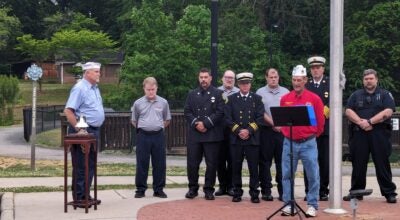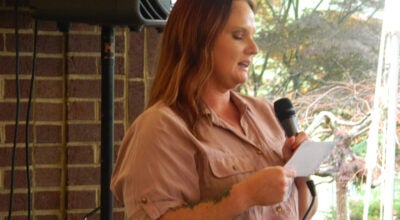Salisbury Symphony is out of this world
Published 12:00 am Wednesday, May 14, 2014
The Salisbury Symphony presented its annual Pops Concert, titled “Out of this World,” at Keppel Auditorium on the campus of Catawba College. There are only four words that can describe this concert: out of this world!
Using 80 musicians, this concert employed one of the largest musical ensembles in the history of the Salisbury Symphony. The concert featured musical compositions based on themes dealing with otherworldly subjects, and consisted mostly of music from science fiction movies and television.
Opening in a totally dark auditorium, with only the blue glow of the conductor’s baton visible, the low soft rumble of the beginning of “Thus Spake Zarathustra” by Richard Strauss (1864-1949) gradually grew in volume and light to reach the final deafening chord. This piece is most famously known from the movie “2001: A Space Odyssey,” and it began our odyssey into out-of-this-world music.
Following this grand opening were two works by John Williams (born 1936): music form “Close Encounters of the Third Kind” and “Star Wars” (“Episode IV: A New Hope,” after which came “Stargate Suite” by David Arnold (born 1962), and music from “Apollo 13,” by James Horner (born 1953).
The first half closed with three movements from Gustav Holst’s (1874-1934) suite, “The Planets: Mars, Venus, and Jupiter.” One thing notable about this performance was the unison playing of the strings in the final movement, “Jupiter.” Besides being able to play very softly, one of the most difficult things for a large orchestra to do is to play in unison, and this performance was particularly spectacular. To hear all of the violins, violas, and cellos playing together — the basses were busy doing their own thing — was awesome, with great waves of sonority flowing through the hall.
Most of the second half of the program consisted of music from “Star Trek”; first, the 2009 movie, then music from the various television series and other films. The concert closed with the well-known finale to “E.T.: the Extraterrestrial,” “Adventure on Earth” by John Williams.
To me, and others with whom I spoke, one the most fascinating parts of the concert was to watch the percussion section — four individuals playing what seemed like a gazillion different instruments, sometimes two at a time, in multiple locations. Each had to move, carrying their music, from one position to the next, from one instrument to another, with split-second timing, sometimes with only a break of one beat. It was like a ballet, with choreography as complex. They are to be praised for a splendid performance.
Lest anyone believe to the contrary, this concert was serious music. It was as difficult and nuanced as any symphony be Beethoven or Tchaikovsky. Just because it was written to accompany a television show or motion picture does not make it any less demanding. The brass and woodwind sections are also to be congratulated on an exceptional performance. Word on the street has it that this was one of the finest performances of the Salisbury Symphony in memory, and I am inclined to agree.
The next season for the Salisbury Symphony, which starts in October, is all about “Puzzles — When? What? Who? Where? and Why?” Come see what that’s all about.





